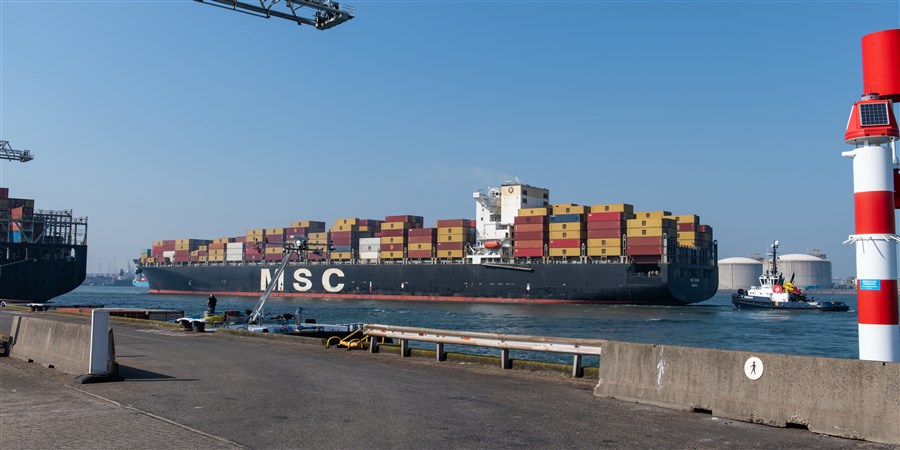Netherlands is EU’s largest importer of goods from Mercosur countries

The European Union (EU) and Mercosur concluded a trade agreement on 6 December 2024. The agreement still requires ratification in the European Parliament and by individual EU member states.
The Netherlands was the EU’s largest purchaser of goods from Brazil, Argentina and Uruguay in 2024, and the EU’s second-largest purchaser of goods from Paraguay. The Netherlands is also the EU’s third-largest exporter to the Mercosur countries, after Germany and Italy. The Netherlands is the EU’s third-largest exporter to Brazil and Argentina, and the fifth-largest to Uruguay and Paraguay.
Together, the four Mercosur countries supply 1.8 percent of all Dutch goods imports and receive a 0.7 percent share of all Dutch goods exports.
| Land | Brazil ( billion euro) | Argentina ( billion euro) | Uruguay ( billion euro) | Paraguay ( billion euro) |
|---|---|---|---|---|
| Imports | ||||
| Netherlands | 11.2 | 1.7 | 0.6 | 0.1 |
| Spain | 8.6 | 1.5 | 0.2 | 0.1 |
| Germany | 6.3 | 0.8 | 0.2 | 0.0 |
| Italy | 4.5 | 1.1 | 0.4 | 0.1 |
| Portugal | 3.7 | 0.2 | 0.1 | 0.0 |
| Exports | ||||
| Germany | 13.2 | 2.3 | 0.4 | 0.2 |
| Italy | 5.8 | 1.2 | 0.4 | 0.1 |
| Netherlands | 4.5 | 1.1 | 0.2 | 0.1 |
| France | 4.1 | 0.8 | 0.3 | 0.1 |
| Belgium | 3.7 | 1.0 | 0.2 | 0.1 |
| Source: CBS, Eurostat | ||||
| 1) including quasi-transit trade | ||||
Main imports are food and fuels, main export is machinery
The exact composition of trade with the Netherlands varies by country, as well as between goods imports and goods exports. In terms of imports, the Netherlands mainly receives goods in the categories of raw materials and fuels, and food and beverages from the Mercosur countries. Exports are mainly chemicals and machinery and transportation equipment.
Major commodities on the import side include crude oil and concentrate feeds for livestock (Brazil, Argentina), soybeans (Brazil), peanuts (Argentina, Paraguay), cellulose from wood (Uruguay) and beef (Argentina, Uruguay).
On the export side, they include oil products and pharmaceuticals (all Mercosur countries), pharmaceuticals (Brazil, Uruguay), ships (Paraguay) and vehicle parts (Brazil).
| Land | Food and beverages (%) | Raw materials and fuels (%) | Chemical products (%) | Manufactured products (%) | Machinery and transport equipment (%) |
|---|---|---|---|---|---|
| Imports | |||||
| Argentina | 698.8 | 476.6 | 258.6 | 6.5 | 53.7 |
| Brazil | 2619.8 | 4691.5 | 400.0 | 469.6 | 413.3 |
| Paraguay | 7.7 | 22.0 | 17.2 | 2.7 | 0.0 |
| Uruguay | 165.7 | 333.0 | 3.7 | 8.9 | 1.0 |
| Exports | |||||
| Argentina | 36.1 | 197.4 | 380.0 | 157.7 | 189.0 |
| Brazil | 236.5 | 616.3 | 1207.6 | 587.4 | 1314.0 |
| Paraguay | 9.3 | 14.9 | 14.0 | 6.4 | 45.8 |
| Uruguay | 27.4 | 45.3 | 31.4 | 17.6 | 33.9 |
| 1) excluding quasi-transit trade | |||||
Netherlands is the gateway to Europe for Mercosur countries
The fact that the Netherlands imports more goods from the Mercosur countries than any other EU country has much to do with its role as the main gateway to Europe. A relatively large share of imports arriving in the Netherlands go directly to other European countries. Other goods - also representing a relatively large share of imports - are not re-exported directly, but do end up being exported again after processing in the Netherlands. For example, a lot of Brazilian soybeans are processed into animal feed in the Netherlands and then exported to Germany.
Of the total goods imports (excluding quasi-transit) from Mercosur countries in 2023, only a relatively small share was destined for the Dutch market. With respect to imports from Brazil the share was 17 percent, for Argentina 16 percent, for Uruguay 15 percent and for Paraguay just 7 percent.
| Herkomstland | Re-exports (%) | Exported after processing in NL (%) | Direct domestic consumption (%) | Processed and consumed in NL (%) |
|---|---|---|---|---|
| Argentina | 46.0 | 38.0 | 5.2 | 10.8 |
| Brazil | 43.0 | 40.1 | 7.9 | 9.0 |
| Paraguay | 69.6 | 23.2 | 2.9 | 4.4 |
| Uruguay | 79.8 | 5.4 | 10.5 | 4.3 |
| 1) excluding quasi-transit trade | ||||